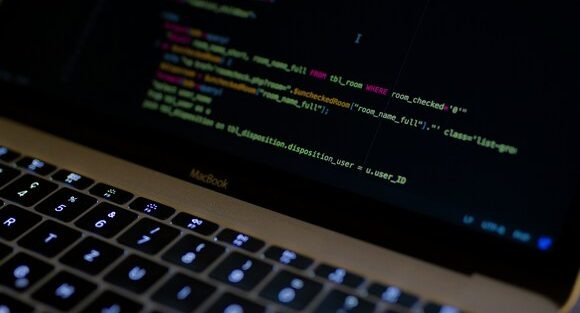In a world where our devices are becoming more interconnected than ever before, the need for robust security systems has never been greater. From smart homes to industrial automation, IoT (Internet of Things) technology plays a crucial role in shaping our daily lives. And when it comes to safeguarding these interconnected networks, PHP emerges as a powerful ally in building secure and reliable solutions. Let’s delve into the realm of IoT security systems and explore how PHP is paving the way towards enhanced protection and peace of mind.
Understanding IoT Security Systems
In the realm of IoT security systems, the focus is on safeguarding interconnected devices and networks from potential threats. These systems are designed to protect sensitive data, prevent unauthorized access, and ensure the integrity of connected devices.
IoT security involves implementing encryption protocols, authentication mechanisms, and monitoring solutions to detect and respond to suspicious activities in real-time. As more devices get connected to the internet, the need for robust security measures becomes increasingly critical.
From smart homes and wearables to industrial IoT applications, securing these interconnected ecosystems requires a multi-layered approach that addresses vulnerabilities at every level. By understanding the unique challenges posed by IoT environments, organizations can proactively mitigate risks and enhance overall cybersecurity posture.
The Role of PHP in IoT Security
When it comes to IoT security systems, the role of PHP is crucial. PHP, a versatile server-side scripting language, can be effectively used to develop robust security solutions for IoT devices. By leveraging PHP’s flexibility and scalability, developers can create secure communication protocols and data encryption methods to protect sensitive information transmitted between connected devices.
PHP’s extensive library of functions and frameworks allows developers to implement authentication mechanisms, access control policies, and secure coding practices within IoT applications seamlessly. Its compatibility with various databases enables efficient storage and retrieval of data without compromising security measures.
PHP’s open-source nature encourages collaborative development efforts in creating innovative security features tailored for IoT environments. With continuous updates and community support, PHP-based IoT security systems can adapt quickly to emerging threats in the ever-evolving cybersecurity landscape.
PHP plays a pivotal role in fortifying IoT security by providing a solid foundation for building resilient solutions that safeguard connected devices from potential vulnerabilities.
Advantages of Using PHP for IoT Security Systems
When it comes to IoT security systems, leveraging PHP can offer a range of advantages. PHP is a versatile and widely-used programming language known for its flexibility and scalability, making it ideal for developing robust security solutions in the IoT landscape.
One key advantage of using PHP for IoT security systems is its extensive community support. With a large community of developers constantly contributing to the language’s development, PHP offers access to a wealth of resources, frameworks, and libraries that can streamline the process of building secure IoT applications.
PHP’s compatibility with various databases and operating systems makes it easier to integrate with different components of an IoT ecosystem. This versatility allows developers to create customized security solutions tailored to meet specific requirements and challenges posed by interconnected devices.
PHP’s built-in security features help developers implement best practices when handling sensitive data in IoT environments. From encryption capabilities to input validation functions, PHP provides essential tools for safeguarding information transmitted between connected devices securely.
Harnessing the power of PHP in building IoT security systems can lead to more efficient development processes, enhanced system reliability, and improved protection against cyber threats in an increasingly interconnected world.
Challenges and Solutions for Building Robust PHP-based IoT Security Systems
Building robust IoT security systems using PHP comes with its own set of challenges. One key issue is ensuring the secure transmission of data between devices and servers. This requires implementing strong encryption protocols to safeguard sensitive information from potential threats.
Another challenge is managing authentication and access control for various IoT devices connected to the system. Properly verifying the identity of each device and user is crucial in preventing unauthorized access and potential breaches.
Maintaining the integrity and confidentiality of data stored within the system poses a significant hurdle. Regular security audits and updates are necessary to address vulnerabilities and enhance overall protection against cyber attacks.
To overcome these challenges, developers can leverage PHP’s extensive library of security features, such as input validation, output encoding, and secure session management. By following best practices in coding standards and continuously monitoring for any anomalies, developers can build resilient PHP-based IoT security systems that effectively mitigate risks associated with interconnected devices.
Conclusion
In today’s interconnected world, IoT security systems play a crucial role in safeguarding our data and privacy. PHP offers a robust and versatile solution for building secure IoT applications. By leveraging the power of PHP, developers can create reliable security systems that protect against cyber threats.
While there are challenges in developing PHP-based IoT security systems, such as scalability and compatibility issues, these hurdles can be overcome with proper planning and implementation strategies. With proactive measures like encryption, authentication protocols, and regular updates, developers can build resilient IoT security solutions using PHP.
As technology continues to advance rapidly, it is essential to prioritize cybersecurity in IoT devices. By harnessing the capabilities of PHP for building secure systems, we can ensure that our connected devices remain protected from potential vulnerabilities. Embracing best practices and staying informed about emerging threats will be key in creating a safer IoT ecosystem for the future.
By incorporating PHP into IoT security systems effectively, we can enhance data protection standards and fortify defenses against cyber attacks. Let’s continue to innovate and collaborate towards a more secure digital landscape powered by robust PHP solutions for IoT security.

